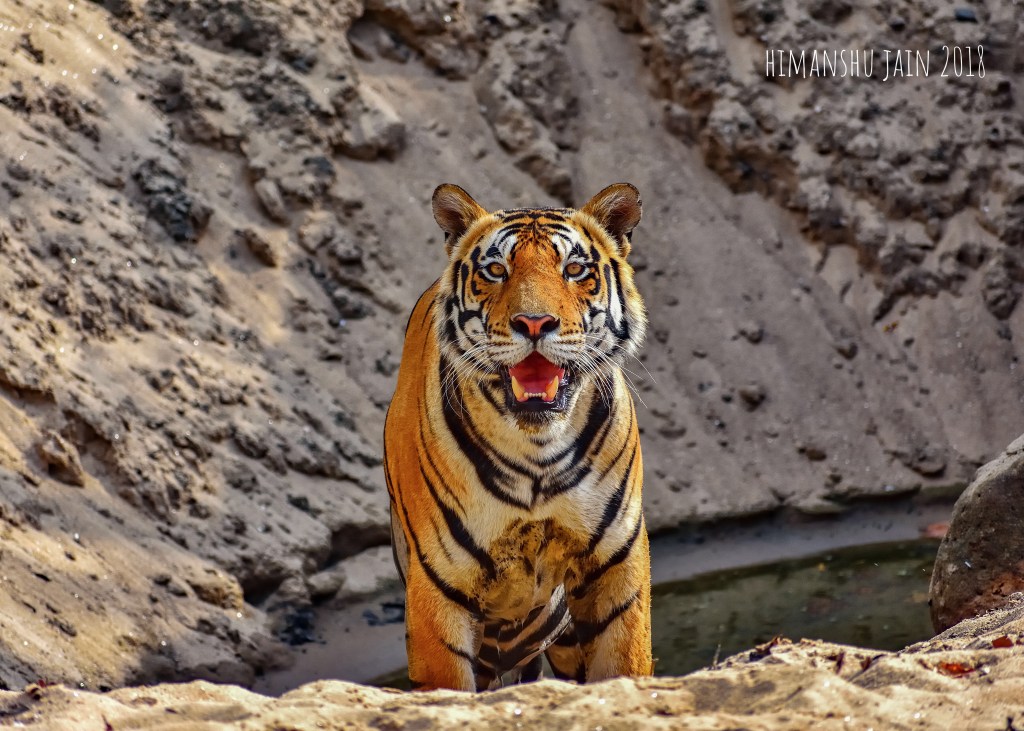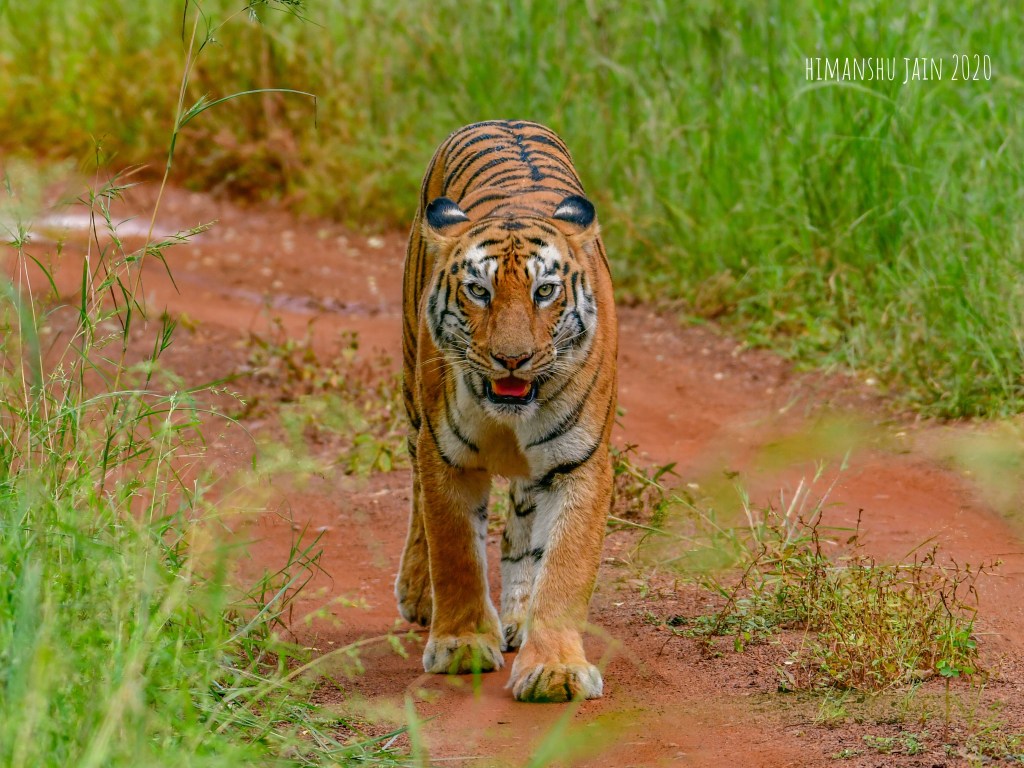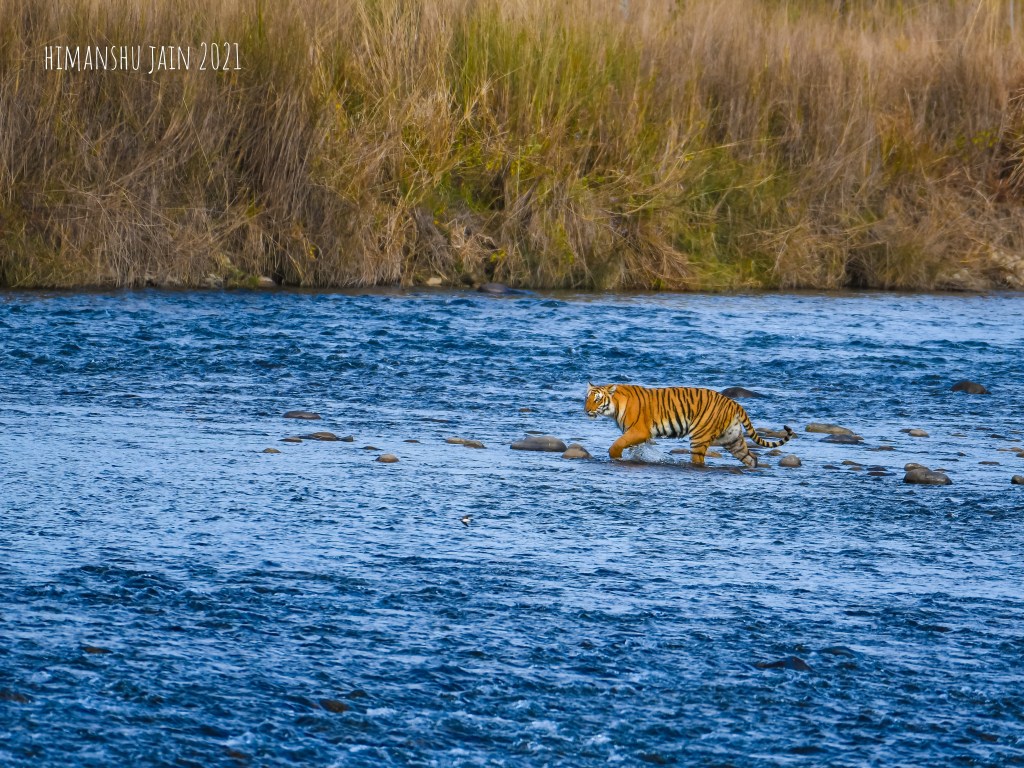February 2020, I embark upon a journey. A quest for the grey ghost of the Himalayas ; the elusive Snow Leopard takes me high up to the snow clad peaks of the Himalayas on the Kibber-Kaza Belt of the Spiti Valley, northern region of India. Located at an altitude of 15000 ft above sea level this area is an endless sea of snow all around during winter and the mercury level drops to as low as 30 degrees celsius below zero.
After days of battling such extreme conditions we found no signs of the elusive predator. It was physically and mentally challenging – like the worst form of punishment, particularly the splitting headaches caused by lack of atmospheric pressure at extreme altitudes. However our gracious hosts for the trip left no stone unturned in keeping us warm and motivated. They were confident we will soon find what we came for.

Day 4, finally the news came in! Our trackers had spotted some fresh paw prints. We rushed to the spot after a difficult trek of about 2 hours. Upon reaching, our joy knew no bounds. We saw them! We saw them! Not one, not two but a whole family! A family of Snow Leopards on the opposite cliff at a distance of about 300yards. It was a beautiful sight, difficult to express in words.


Photography trips to remote areas like these are a splendid learning experience. Think of it as an opportunity to live with people from very different cultures, eat their local food, learn their way of life ; and then come back home with a pot of gold- a bag that is full of memories and photographs. They say ‘A picture is worth a thousand words’ and a well taken photograph can create memories that last a lifetime- making that moment immortal. It is for these breathtaking moments that I think I took up Wildlife Photography as a hobby.
In the current era of high quality cellphone cameras, almost everyone has already been practising Photography at one level or another. Then it could be selfies, family pictures on holidays or photos for social media. Photography is a hobby that anyone can take up, at all levels, no special skills or complex technical training needed. Easily accessible most of the times a good camera phone or a point and shoot camera is enough to capture some first basic clicks.
However if you are serious about the Art of Photography I suggest you must strongly consider investing in a DSLR. Specifically for the purpose of low light Photography or Wildlife photos that need a strong zoom lens. One needs to consider the fact that despite having millions of pixels, the image sensor of a cellphone camera is about the size of a fingernail, while that of a DSLR is generally over an inch in length. A basic DSLR with dual lens (wide angle and zoom) can be purchased at most electronics stores for as low as US$400. Additional equipment can be rented at reasonable rates.
The importance of a hobby in our lives can be highly underestimated sometimes. Particularly by the city dwellers who hardly have any time, even for themselves in all the hustle bustle. I learnt this the hard way after suffering from severe anxiety and panic attacks. Thereafter, once I took up Photography; there was no looking back. The positive vibes were noticeable in my physical, mental and spiritual health. To lead a happy and peaceful life, one needs to have something to look forward to, something that brings the energy to bounce back on your feet.
It all started with a small adventure trip to the Pench National Park, the location of the famous ‘Jungle Book’. We sighted a Tigress and managed some pretty decent photos with a point and shoot camera. Encouraged! By the next trip, I decided to buy a beginner level DSLR. This time I was lucky to spot a huge male Tiger at a close distance in perfect light. It is interesting to note that if the light and distance are in favour, even a basic DSLR and lens combination is more than enough to produce a high quality image.

Imagine! Tracking down a Wild Tiger in a dense jungle can be such a thrilling experience. Pitting down your senses against the ultimate killing machine – total adrenaline rush. Known for it’s strength and enormous power ‘The Tiger’ is also the national animal of India. What makes wildlife Photography so challenging is the fact that the subjects are hardly co-operative. They hardly show themselves, specifically when the light is ideal for photography. This makes a good image a very satisfying reward.
Like every artist even a photographer wants to improve his work each time. Can’t help but think- I want a photo with better eye contact. Next, I want to photograph of the Tiger drinking from the pond of water with reflection. Until it becomes a never ending process of multiple trips to the jungle while upgrading the camera and lens kits.

Sharing some of the things I learnt with time. I think these can help budding photographers wanting to take up Wild Life Photography.
1) Do as many field trips as possible, if targeting Tigers, do multiple core zone safaris. Photography is best learned through experience on the field and not by just reading.
2) A bit of homework always helps though, like a basic understanding of concepts such as the ‘Exposure Triangle’. This consists of 3 Variables. Shutter Speed, Aperture and ISO. The way a digital camera works is; the lens casts an image onto a sensor, which has individual receptors for each pixel. These are then put together by the processor to create a digital image.
a) Shutter speed :- This is the amount of time the scene, or image is imprinted on the image sensor. Faster shutter speeds (around a thousandth of a second) freeze motion and are desirable for action shots, while slower speeds will cause a motion blur when the subject is moving, or due to vibrations of photographers’ hands. Slower speeds are desirable in situations like low light photography, or when one has to show movement in the photograph. Like flowing water, or mist effect on waves. It is called long exposure Photography and must be done with a tripod as it is impossible to hold a camera still for such a long time.

b) Aperture :- is the opening in the lens through which the light passes. Smaller the aperture (meaning larger f number), the lesser the light will pass means a greater depth of field (more part of the image in sharp focus), while a wider aperture (smaller f number) means more light passes, a brighter image but only a small part will be in sharp focus. Wider aperture means narrower depth of field producing a bokeh effect, where only the subject is in sharp focus with a blur background. The effect is often desirable for wildlife.

c) ISO :- is the sensitivity of the sensor to light, higher ISO will produce brighter images, but with low sharpness and with digital noise (those dots that appear on images clicked in low light). ISO typically shoots up in low light, super fast shutter speed or very narrow aperture.

It is critical to balance these 3 factors to have enough light onto the sensor. Too much light means an overexposed image with burned overly bright pixels, and less light means an underexposed dark image. Both overexposed and underexposed images will lose out detail in the photo. Fortunately most modes on the modern camera will balance out these 3 variables to get perfect level of exposure.

3) Discipline is the key both in terms treating the camera kit well, as well as punctuality. Reading the camera manual from cover to cover can provide invaluable tips regarding cleaning and maintenance of cameras, as well as finer details of photography. Good sleep is equally critical. Early morning hours are important, in terms of movement of the larger Carnivora, and one must be alert in these hours.
4) Most important factors for good photo in the correct order are :-
- Light Angle
- Distance to Subject
- Lens
- Camera
It is desirable to light up the subject well, specifically in wildlife to attain higher shutter speeds for a sharp image. Hence it is best when the sunlight is behind the photographer lighting up the subject. Also, in case of animals in movement, it is better to project their path and position oneself in advance to get a photo with face and eyes rather than following the animal. Against the light photos can be taken as silhouette shots.

5) In case of a beginner using a DSLR, it is OK to start with Automatic mode, but when possible, get to the manual mode, experiment and see the result of different settings in terms of Shutter speed, Aperture and ISO.
6) Image composition is critical, spend some time reading about the rule of thirds. According to this guideline, the subject must be placed on left or right one third of the image, facing the negative space in the other two thirds. This composition typically draws greater attention of the viewer’s eye rather than placing the subject in center.

7) Remember when we visit the Jungle, we are going to the home of the animals and birds. Let us be responsible eco tourists, and do our best not to disturb or adversely affect the inhabitants.
Photography can be a fun learning experience and a very addictive hobby, especially for those who like to travel. One may specialize in a specific form of photography based on personal interest and choice. It is a great idea to showcase one’s work on various platforms and social media, which enables interaction with like minded individuals, and provides motivation to take one’s skills to the next level.
Have an Arty Week!

Guest Blogger – Mr. Himanshu Jain
Passionate about Wildlife Photography Himanshu is a Businessman from Mumbai. He took up Photography as a hobby in 2018 and has been on a number of wildlife trips since then. His interests also include Cars and Coffee.

Beautiful work by Mr. Himanshu Jain. The snow clad mountains, Leopard Expeditions, & what not the Majestic tiger combined with flora & bird species that surround us have been done so well.
Above all, the importance of responsible eco tourism and it’s preaching is what makes a wildlifer in true senses.
Looking forward to see more of his work.
All the best. Kudos!!🤗🤗
LikeLiked by 2 people
Thank You Kartik. I am glad he agreed to share it with us. You can connect with him on the FB and Insta links mentioned with his bio at the bottom of the article.
LikeLiked by 1 person
Truly awe-inspiring photos! Helpful information and photography tips! ❤
LikeLiked by 2 people
Thank You Cheryl 😀 I’m glad you liked it. Yes! Even I learnt a lot through this post.
LikeLiked by 2 people
🙂
LikeLiked by 1 person
Thanks for the kind words. It is my first article, am glad you enjoyed it. For more please visit my Instagram page @bitter147
LikeLiked by 1 person
Amazing images,Himanshus dedication reflects in those images.
LikeLiked by 2 people
Thank You Karan
LikeLike
Wow! I think Himanshu has some really nice clicks. He has the patience and the passion for nature that reflect in his work. Absolutely love watching his pictures. Thanks for featuring him Nirali, he is truly talented!
LikeLiked by 2 people
Thank you Namrata. Yes! His work is really good. Do check his pages on FB and Insta.
LikeLike
Amazing pics and spirit of Himanshu. Simply awesome 👏
I can so relate to traveling and exposure to different cultures and people. I have traveled a lot but have yet to face wild life face to face 😊 God willing soon
LikeLiked by 1 person
Thank you for your kind words Mr. Wahi 😀 Let’s hope you get to do that soon 😊
LikeLiked by 2 people
My pleasure Nirali 😊
LikeLiked by 1 person
Thanks for the kind words of encouragement sir. For more, please visit my Instagram page @bitter147
LikeLiked by 2 people
My pleasure Himanshu.
LikeLiked by 1 person
Your photography is so superb and wonderful to look at.
LikeLiked by 1 person
Thank You 😀
LikeLiked by 1 person